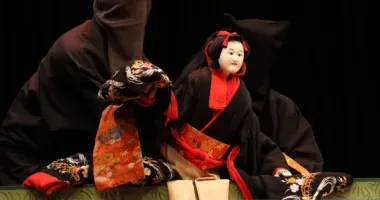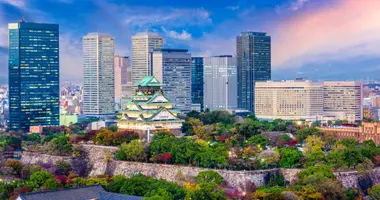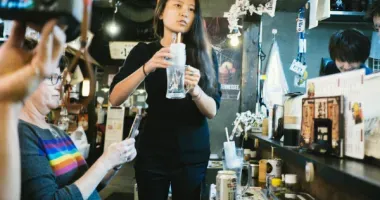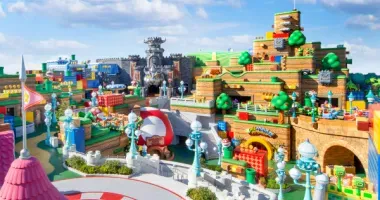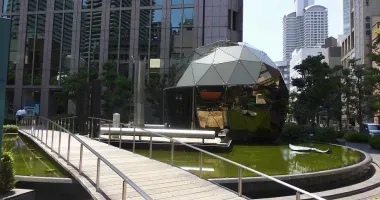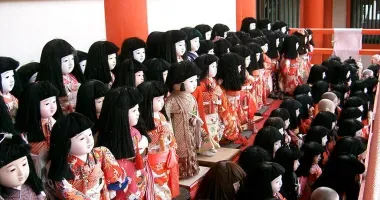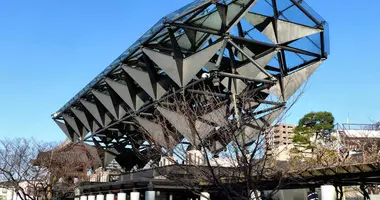Sumiyoshi Taisha 住吉大社
- Published on : 05/11/2020
- by : SR
- Youtube
Sumiyoshi Taisha, in southern Osaka, is claimed to be one of the oldest shrines in Japan. It is said to date back to 211 AD, when legend has it the shrine was built to give thanks to the gods of the sea for the safe return of the Empress Jingu on a voyage to Korea.
Sumiyoshi Taisha Shrine
History
There is little historical evidence to go on, however. Empress Jingu is now considered to be most likely mythical rather than historical and the first Sumiyoshi Shrine was probably located in Hakata (Fukuoka), not Osaka.
Sumiyoshi Taisha is mentioned in Murasaki Shikibu's The Tale of Genji and is believed to be the entrance point of the Silk Road into Japan. Further references to the shrine can be found in the ancient texts: the Kojiki and the Nihon Shoki.
In its early days the entrance to the shrine stood at the water's edge in what is now the adjacent Sumiyoshi Koen (Sumiyoshi Park).
Yasunari Kawabata (1899-1972) also wrote about the shrine in his short story, Sorihashi (反橋) in his trilogy (Sorihashi, Shigure, Tamayura; 反橋・しぐれ・たまゆら). There is a monument to the Osaka-born, Nobel Prize-winning novelist close to the famous Sorihashi Bridge, with a passage from the book engraved in the stone.
Shrine Architecture - sumiyoshi zukuri
Sumiyoshi Taisha (Sumiyoshi Grand Shrine) predates the arrival of Buddhism in Japan and along with Izumo Taisha (taisha-zukuri) and the Ise Jingu (shinmei-zukuri) has its own style of architecture known as sumiyoshi zukuri, free of mainland Asian influences.
The oldest buildings at Sumiyoshi Taisha date from 1810 and are painted in a dark red color. The roofs are straight (rather than curved in later styles) and made of thatch.
Other features of sumiyoshi zukuri are the okichigi - forked finials on the roof of the honden or main shrine and the five square billets (katsuogi) placed horizontally along the roof. The building is surrounded by a wooden fence or tamagaki.
Other notable structures include a kagura hall, an arched bridge over a scenic pond known as Taiko bashi or Sorihashi, said to have been originally given to the shrine by Yodogimi, the lover of Toyotomi Hideyoshi and over 700 stone lanterns donated by seafarers and companies related to marine transport.
In the Heian Period, Sumiyoshi Taisha was the recipient of imperial favor and patronage. It was from nearby Suminoe no Tsu that imperial embassies to China set sail and were joined on their voyages by the head priests of the shrine.
Sumiyoshi Taisha is now a popular place for traditional Shinto marriage ceremonies and draws huge crowds of Osakans for the New Year hatsumode (first shrine visit of the year).
There are hundreds of other Sumiyoshi shrines in Japan dedicated to the kami who protect sailors, fishermen and those traveling on the sea.
Festivals
Sumiyoshi Shrine plays host to a number of major festivals throughout the year. The above mentioned New Year hatsumode attracts as many as two million people over a three day period January 1-3. On the 4th there is the Toka matsuri - an offering of rice cakes to the kami with kagura dancing.
The Otaue-shinji Festival takes place on June 14 and is a rice planting and fertility ceremony accompanied by traditional dancing including kagura.
The Sumiyoshi Festival takes place on Marine Day (due to the shrine's connections with sea) on the third Monday in July. Related events also occur from July 30 - August 1. There are processions and mikoshi (portable shrines) are paraded through the local streets.
Hattatsumairi (初辰) is a monthly festival that takes place on the Day of the Dragon (Tatsu) to pray for success in business - a desire close to the heart of this mercantile and profit-hungry city and also for home safety and prosperity. The day varies and you will need to consult the official site (below) to find the exact day. It is customary to visit the four sub-shrines of Tanekashi-sha, Nankun-sha, Asazawa-sha and Otoshi-sha in that order.
Address, timetable & access
Sumiyoshi Taisha
Address
2 Chome-9-89 Sumiyoshi, Sumiyoshi Ward
558-0045
Japan
Phone
+81 (0)6 6672 0753Timetable
Daily - 6 a.m. - 5 p.m.Price
FreeAccess
Sumiyoshi can be reached in about 15 minutes by the Hankai Tramway Uemachi Line from Tennoji Station to Sumiyoshi or Sumiyoshikoen (200 yen).
Alternatively take a Nankai train from Namba Station to Sumiyoshi Taisha Station (210 yen; 10 minutes) on the west side of the shrine or to Sumiyoshi-higashi Station on the Nankai Koya Line on the east side.Website
http://www.sumiyoshitaisha.net/

